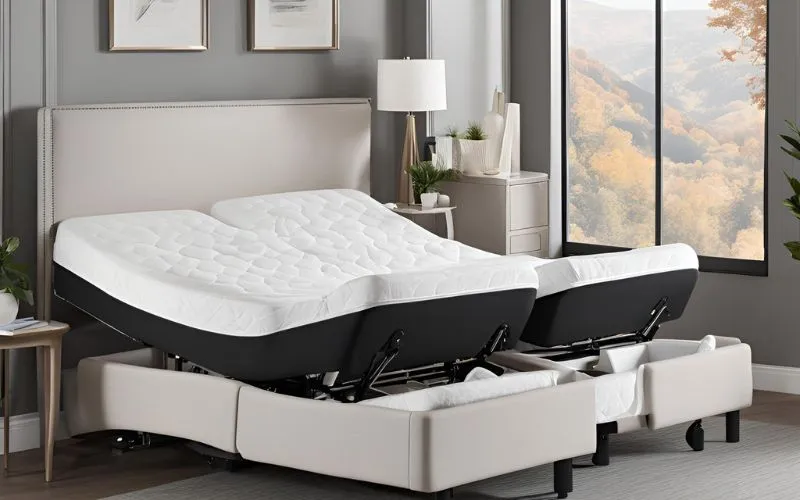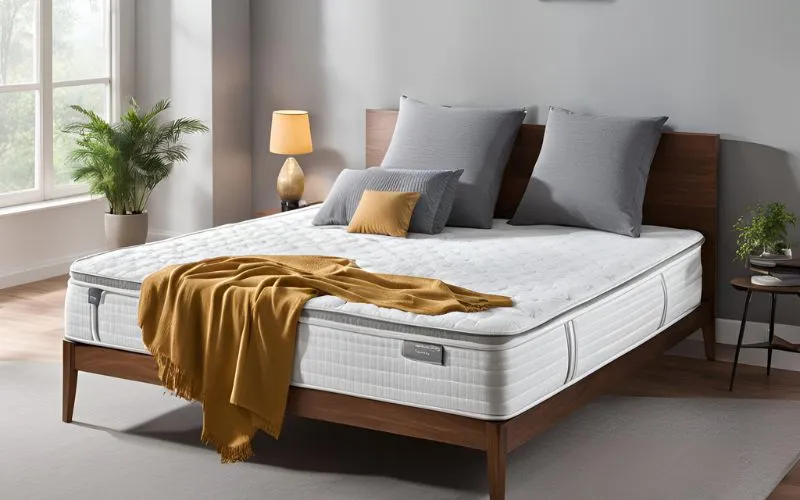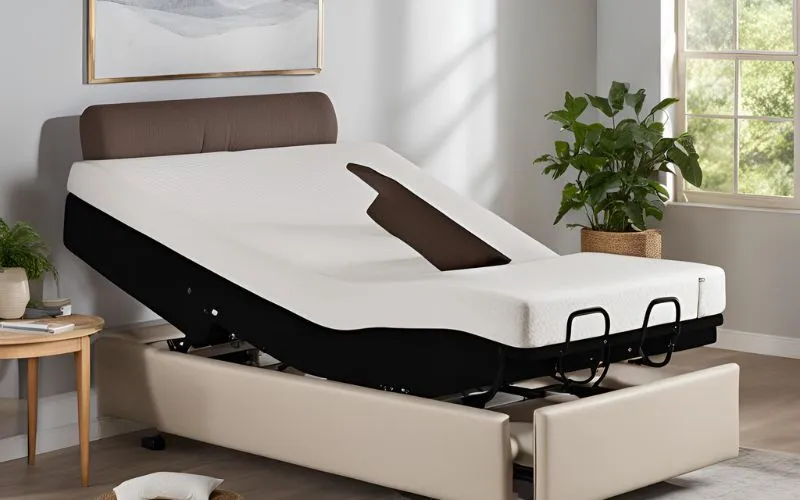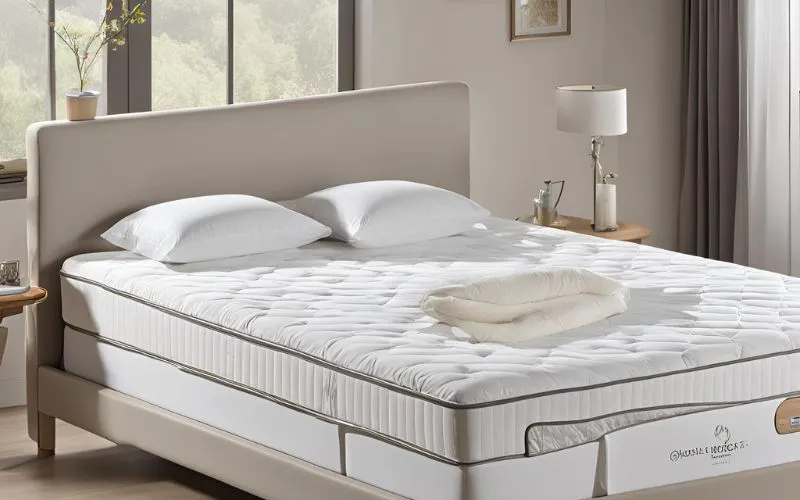Sleeping positions for joint pain relief with adjustable beds
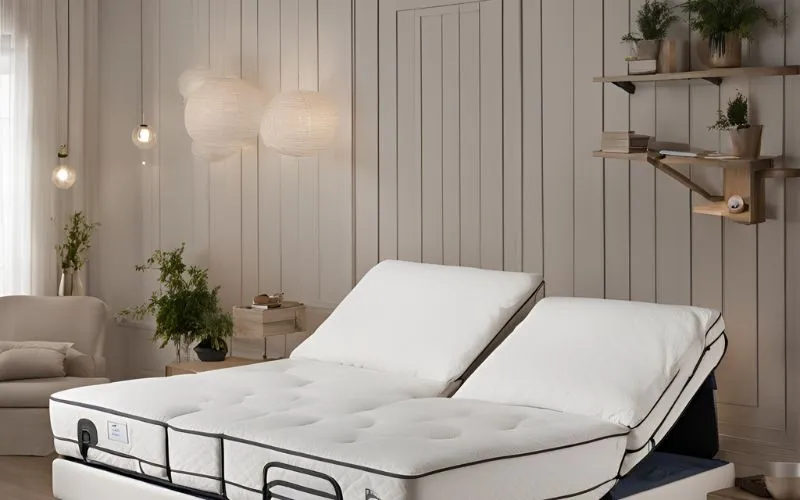
Introduction
Joint pain can significantly impact the quality of sleep, making it essential to consider sleeping positions for joint pain relief, particularly with the use of adjustable beds. This comprehensive guide aims to provide valuable insights into the relationship between joint pain and sleep, the best sleeping positions for joint pain relief, and the benefits of adjustable beds in addressing this issue.
Understanding Joint Pain and Its Impact on Sleep
What Causes Joint Pain?
Joint pain can be caused by various factors such as:
- Injury: Trauma or damage to the joint, including fractures, dislocations, and sprains.
- Arthritis: Conditions like osteoarthritis, rheumatoid arthritis, gout, and lupus that affect the joints.
- Overuse: Continuous stress or strain on the joints due to repetitive movements or excessive physical activity.
- Medical Conditions: Certain diseases and infections such as bursitis, tendonitis, and Lyme disease can lead to joint pain.
In addition, joint pain may also be attributed to:
- Inflammation: The body’s response to injury, infection, or arthritis can cause joint swelling and pain.
- Mobility Limitations: Reduced range of motion and stiffness in the joints, which can hinder everyday activities.
- Sleep Disturbances: Discomfort from joint pain can disrupt sleep patterns, leading to fatigue and daytime drowsiness.
The Relationship Between Joint Pain and Sleep
When your joints hurt, it’s hard to sleep well. The pain and stiffness can keep you up at night, tossing and turning to find a comfortable position. But here’s the tricky part: when you don’t sleep well, your joint pain can get worse. Not getting enough sleep can make your joints feel even more painful and swollen.
- Joint pain makes it hard to sleep.
- Not sleeping well makes your joint pain worse.
It’s like a cycle: joint pain makes it hard to sleep, and not sleeping well makes your joint pain worse. But there are things you can do to break this cycle. Simple changes like using an adjustable bed to find a comfy position or managing your pain with medicine and therapy can make a big difference. By taking care of your sleep and your joints, you can start feeling better and getting the rest you need.
Best Sleeping Positions for Joint Pain Relief
The Importance of Sleeping Position for Joint Pain Relief
Choosing the right sleeping position is crucial for individuals with joint pain. It can help minimize discomfort, reduce pressure on the affected joints, and promote better sleep quality. Here’s why:
- Improving blood circulation to the joints: Certain sleeping positions can help improve blood flow to the joints, which can reduce inflammation and promote healing. For example, sleeping on your back with pillows under your knees can help relieve pressure on the lower back and improve circulation to the hips and knees.
- Minimizing muscle tension: By finding a comfortable sleeping position, you can reduce muscle tension around the joints, easing stiffness and discomfort. Side sleeping with a pillow between the knees can help align the spine and alleviate pressure on the hips and shoulders, reducing muscle strain.
- Reducing the risk of waking up in pain: Sleeping in a position that supports your joints can help prevent waking up in pain or experiencing discomfort throughout the night. Experiment with different sleeping positions, such as sleeping on your side or back, to find the most comfortable option for your joints.
- Supporting proper spinal alignment: Proper spinal alignment is essential for reducing strain on the joints and supporting overall comfort. Choosing a sleeping position that maintains alignment can help alleviate pressure on the spine and joints. For example, using a contoured pillow to support the natural curve of your neck can help keep your spine aligned while sleeping on your back.
Sleeping Positions for Specific Joint Pain Areas
When it comes to managing joint pain during sleep, specific sleeping positions can play a crucial role in providing relief. Here are some targeted sleeping positions for different joint pain areas:
- Hip Pain: Side sleeping with a pillow between the knees helps to align the hips and reduce pressure on the joints.
- Knee Pain: Back sleeping with a cushion under the knees can alleviate knee pain by keeping the knees slightly elevated and supported.
- Lower Back Pain: For lower back pain, try sleeping on your back with a pillow under your knees to maintain the natural curve of the spine and reduce strain on the lower back.
- Shoulder Pain: Sleeping on the unaffected side with the arms slightly forward can relieve pressure on the affected shoulder joint. Placing a pillow under the arm can also help in reducing discomfort.
Benefits of Adjustable Beds for Joint Pain Relief
How Adjustable Beds Support Joint Pain Relief
Adjustable beds are designed to provide support and relief for individuals suffering from joint pain. Here’s a more detailed look at how these beds can be beneficial:
- Customized Sleeping Positions: Adjustable beds allow users to customize their sleeping positions, catering to their specific needs. This customization provides optimal support and comfort for individuals with joint pain.
- Alleviating Pressure on Joints: By elevating the upper or lower body, adjustable beds can effectively alleviate pressure on specific joints. This can significantly reduce discomfort and promote better sleep for individuals experiencing joint pain.
- Improved Blood Circulation: The flexibility of adjustable beds can also contribute to improved blood circulation, which is beneficial for joint pain relief and overall comfort during sleep.
- Enhanced Mobility: For individuals with joint pain, getting in and out of bed can be a challenge. Adjustable beds can enhance mobility by providing easier access and a more comfortable transition in and out of bed.
Features to Consider When Choosing an Adjustable Bed
When selecting an adjustable bed for joint pain relief, factors such as mattress type, adjustability options, and additional features like massage functions should be considered to maximize comfort and support for the affected areas. Here’s why:
- Mattress type: Choosing the right mattress type is crucial for joint pain relief. Memory foam mattresses are often recommended for individuals with joint pain because they conform to the body’s shape, providing targeted support and pressure relief. Additionally, hybrid mattresses that combine foam layers with pocketed coils can offer a balance of support and responsiveness, catering to different sleep preferences and body types.
- Adjustability options: Look for adjustable beds that offer a wide range of positioning options to accommodate various sleep needs and preferences. For individuals with joint pain, features like head and foot elevation can help alleviate pressure on the lower back, hips, and knees, promoting better alignment and reducing discomfort. Some adjustable beds also come with preset positions for activities like reading or watching TV, providing added convenience and customization.
- Massage functions: Many adjustable beds come with built-in massage functions that can help soothe sore muscles and alleviate tension in the affected areas. Look for beds with adjustable intensity levels and multiple massage modes to customize your experience based on your preferences and needs. Massage functions can enhance relaxation and promote better sleep quality, contributing to overall joint pain relief.
By considering these factors when selecting an adjustable bed, you can create a supportive and comfortable sleep environment that helps alleviate joint pain and improves overall sleep quality.
Conclusion
Choosing the right sleeping positions and bedding equipment is crucial for managing joint pain and improving sleep quality. By understanding the impact of joint pain on sleep and the benefits of adjustable beds, individuals can make informed choices to enhance their overall comfort and well-being.
